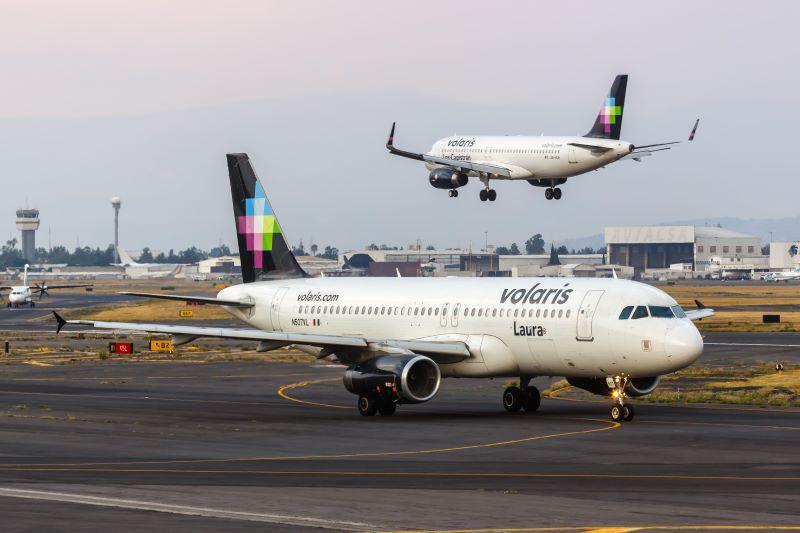
Mexican ULCC Volaris is working to combat what it deems as temporary excess capacity in the domestic market as it waits for the U.S. to restore Mexico’s safety rating.
The airline is taking several steps to counteract that surplus capacity including allocating three additional aircraft to its subsidiaries in Costa Rica and El Salvador for a total of nine aircraft deployed between those entities.
During a July 25 discussion of 2023 second quarter (Q2) earnings, Volaris EVP Airline Commercial and Operations Holger Blankenstein said the airline’s competitors in Mexico do not have alternative air operator’s certificates, “leaving them with no other options to deploy additional capacity outside Mexico.”
Blankenstein said Volaris was reshuffling its domestic capacity to alleviate pressure on specific higher density routes. The airline has added 40 new domestic routes largely in secondary cities. He also said Volaris has encountered infrastructure constraints at Mexico City International airport, where its slots have been reduced.
The airline plans to redeploy 5% of its total capacity into international markets once the FAA restores Mexico’s safety rating to Category 1, likely in the fourth quarter. The downgrade occurred more than two years ago; Volaris CEO Enrique Beltranena said the “restoration process has been long and burdensome.”
Once the upgrade occurs, Volaris can resume its codeshare with Denver-based ULCC Frontier Airlines and better utilize the 35 Airbus A320neo family aircraft delivered to the airline since the downgrade, Beltranena said. “These aircraft are allocated primarily for domestic operations, meaning we are not fully capitalizing on their efficiency,” he said.
The overcapacity in Mexico’s domestic market led to fare pressure in Q2, which resulted in Volaris’ total operating unit revenue per available seat mile (TRASM) falling 2% year-over-year to 7.81 cents. A nearly 23% jump in total ancillary revenue per passenger to $44 helped alleviate some of the TRASM pressure.
Blakenstein said Volaris anticipates TRASM improvement year-over-year for the second half of this year, and also a better performance versus the first half of 2023.
“Volaris’ results continue to be dragged down by an oversupplied domestic market in Mexico due to the country’s loss of Category 1 status,” TD Cowen analyst Helane Becker said in a research report. Mexico’s three main airlines—Volaris, Viva Aerobus, and Aeromexico—are unable to grow into the U.S. until an upgrade occurs, she said.
Until the U.S. restores Mexico’s safety rating, “the carriers are deploying their aircraft in the domestic market, pressuring yields and unit revenue,” Becker said.
Volaris has also opted to extend leases on six Airbus narrowbodies that were originally scheduled to leave its fleet in 2023. As a result, the company’s total capacity growth for 2023 will increase from 10% to 13%.
The airline ended the second quarter with 123 aircraft compared with 113 the year prior, and said it expects to grow its fleet to 127 Airbus narrowbodies by the end of 2023, “considering an Airbus potential delay of at least two aircraft until 2024.”
During Q2, Volaris grew its total operating revenue by 13.2% year-over-year to $782 million, and the company’s expenses increased 3% to $731 million. Volaris posted $6 million in Q2 net income compared with a $49 million loss the year prior.
Becker noted Volaris’ revenues “missed by about 2%” while operating expenses “came in 3% above our estimates.” Volaris has also changed its guidance range for unit costs excluding fuel for this year from 4.6-4.7 cents to 4.7-4.8 cents.



